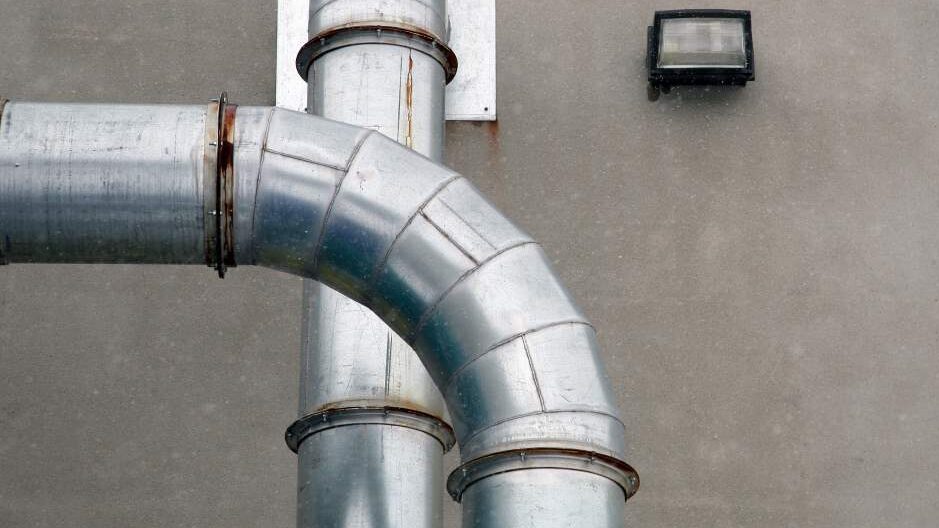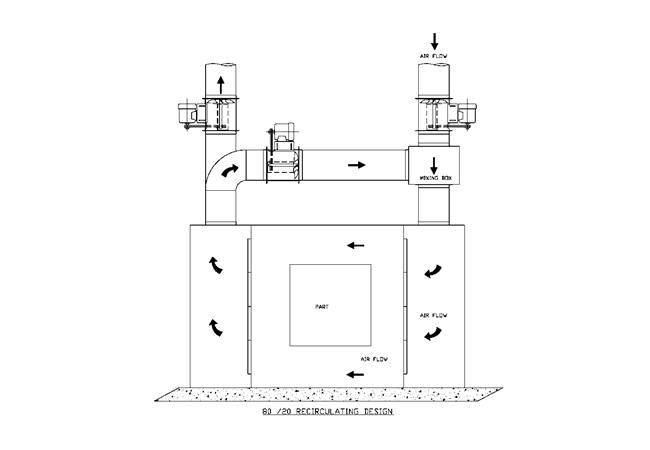Removal of polluted air and the introduction of clean fresh air into a paint booth is important for the safety of the operators and the quality of the end product. There are various ventilation methods for spray systems depending on the flow of air through the enclosure. There are advantages and disadvantages to each method. The ventilation methods include:
Cross Draft – With a cross draft system, air enters from the front of the booth, usually through the main doors of the booth. It flows horizontally through the space to the back, and exits through an exhaust plenum in the back of the booth. The air flows directly to the area that is to be painted. These types of booths are generally the most economical and are easy to integrate into a facility; this makes them the most popular in many environments. However, the air flow is linear and travels a greater distance, making it more likely that if dust or other contaminant is present in the stream, it has a lot of ground to cover before it exits. In addition, it is likely that the operator may be in the line of flow which can create areas with excess paint and added pollutant exposure for the painter.
Down Draft – With a down draft system, also known as vertical draft, air enters from the top of the booth and filters out through the floor of the booth. The air flows around the product and pushes dust, contaminants, and excess paint down, away from the product. This is generally a cleaner process and is thought of as the best air flow method. The operator is out of the line of air flow and risk of contaminating the product is reduced. The disadvantage of these systems is that they are more expensive due to the air flowing out through the floor; the booth must either be raised or a tunnel or pit must be placed underneath.
Semi-Down Draft – With a semi-down draft system, or a diagonal draft, air enters from the top front of the booth and exhausts through an exhaust plenum in the back of the booth. The air flow is more uniform with this type of system, however, the downward flow from the front of the booth may create a zone at the front that gets less air flow. Overspray and contaminants flow away from the product reducing contamination. This type of booth is cost-effective, costing less than systems that require special tunnels or raised platforms. The booth itself is mid-range in price.
Side-Down Draft – With a side-down draft system, air enters from the top of the booth flowing down and exits out of exhaust plenums located on both sides of your booth at floor level. The fresh air entering from the top of the booth comes through large portion of the ceiling. The pattern of air flow is even around the product, and dust or contaminants are drawn way from the finish. Again, this type of system is more cost-effective than those that require installation of tunnels, pits, or platforms. However, it is more expensive than other types due to the large full upper plenum in the ceiling.
Determining the best air flow for ventilation begins with analyzing the parts that are being painted. Important factors include the size, shape and weight of the product. Other deciding factors may be installation limitations and cost, as well as operational costs. The health and safety of the operator is a consideration. And finally, the product quality must be evaluated, in regard to the specific product that is being painted.
Production Systems manufactures all types of paint spray booth systems. We can help you identify which method is best for your facility and your product. Our engineers are here to help with any questions. You may call us at (336) 886-7161, or email us at info@productionsystems-usa.com for more information.




